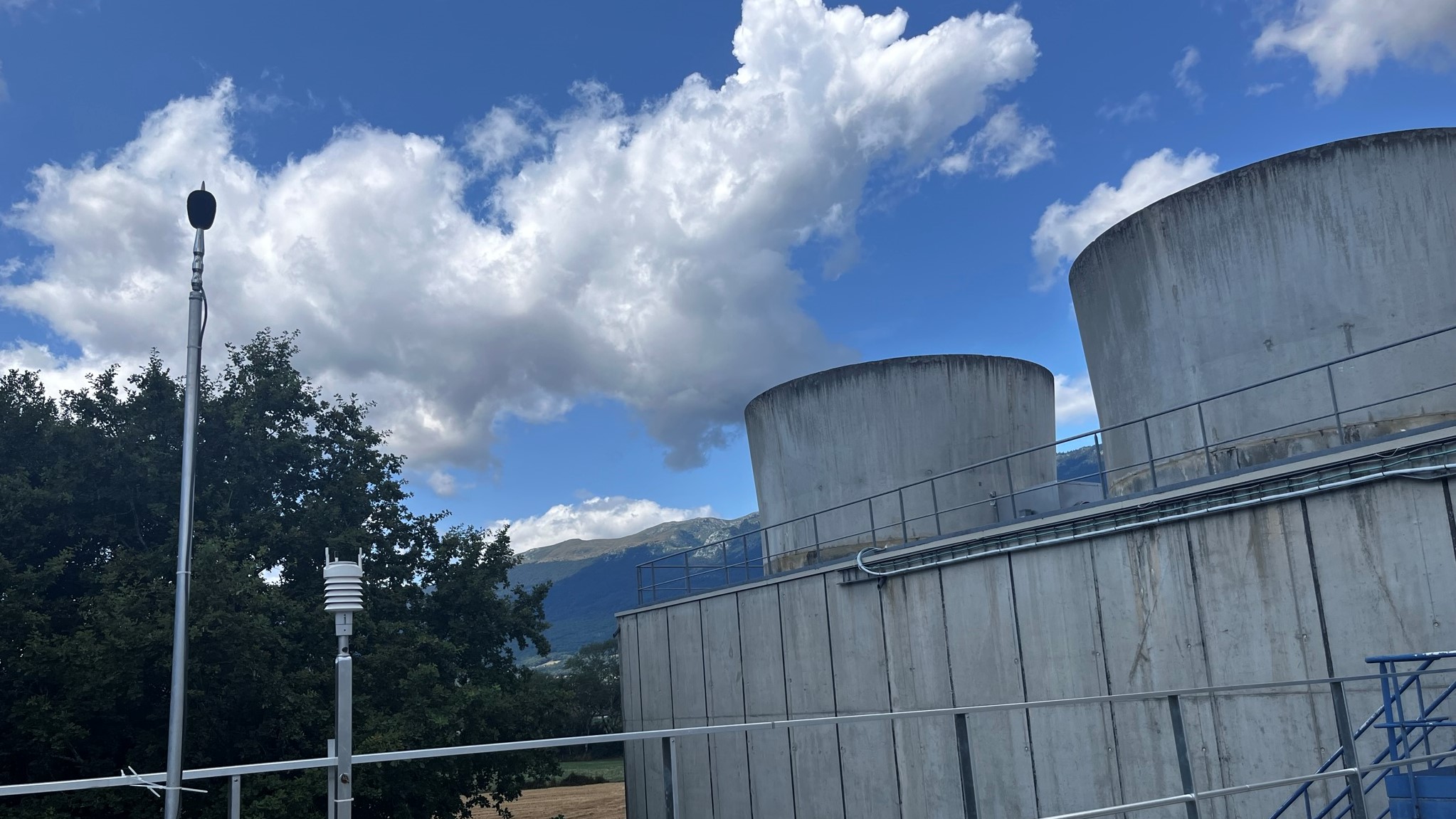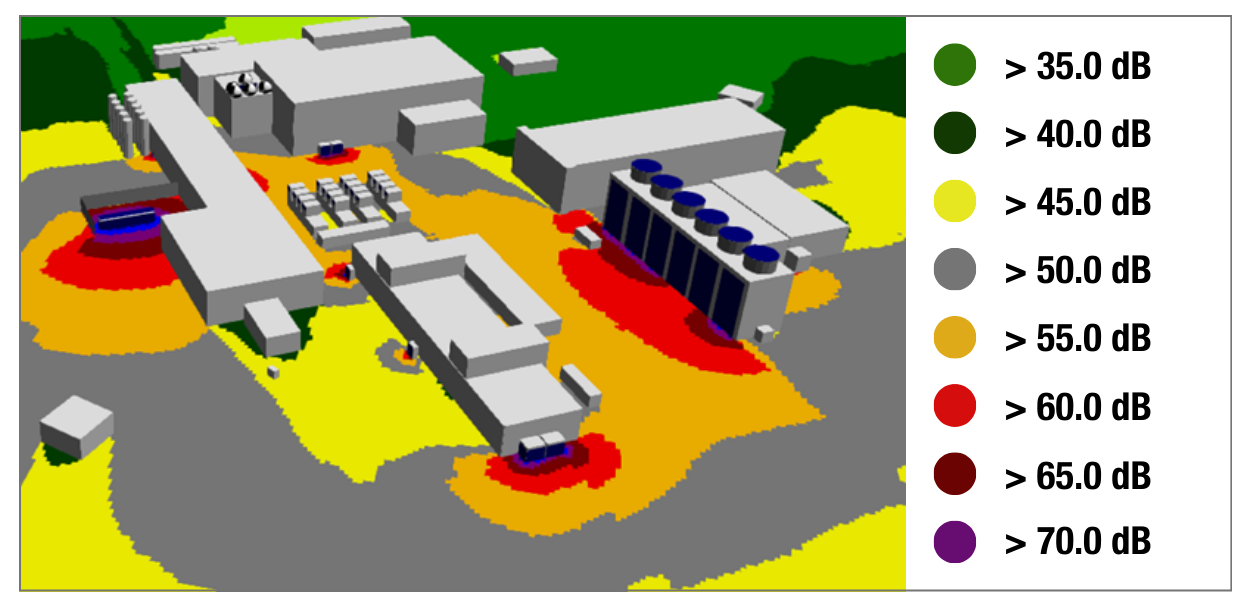Since the accelerator complex resumed operation in 2022, noise has been kept within 2018 reference levels thanks to robust and effective noise modelling predictions and permanent local monitoring systems.
Managing CERN's noise footprint
CERN’s host region has evolved over time, with housing being constructed increasingly closer to the Laboratory’s existing facilities. CERN monitors noise at its perimeters and throughout its sites and takes action to reduce noise during accelerator operation, through measures such as noise barriers and silencers.
Most of CERN’s surface installations are in France. In 2019, the Laboratory published a noise reduction policy and implementation strategy, which were agreed with the Host State authorities. This policy has proved effective and remains under regular review.
To keep its existing noise footprint under control, CERN commits not to exceed the reference noise levels by more than 3 dBA at its perimeters, based on measurements carried out in 2018 when all CERN accelerators were running (reference operation year). CERN carries out yearly noise measurement campaigns at 70 locations, during both day- and night-time, to verify that the noise levels remain within set limits. The typical noise levels measured at CERN’s site perimeters are around 50 dBA during the day and 45 dBA at night.
The 2022 restart of the accelerator complex saw increased noise levels, due notably to ventilation, cooling and the operation of electrical transformers, which had been put on hold during the second long shutdown. Over the reporting period, three complaints were received and promptly addressed with stakeholders.
CERN collaborates with the towns where its sites are located, providing them with the results of the yearly noise monitoring campaigns at the site perimeters. The Organization also liaises with local authorities regarding plans for new residential areas and provides information and updates concerning ongoing noise claims. Further, for any significant new project, CERN systematically carries out a noise impact assessment to complement the construction permits submitted to the local authorities (see In focus below).

NOISE CHARACTERISATION, MODELLING AND REAL-TIME MONITORING

At the end of 2021, CERN implemented an online real-time monitoring system at Point 2 of the LHC and Point 4 of the SPS. This, coupled with CERN’s operational data visualisation tools which overlay acoustic data on activity graphs, helps identify dominant noise sources. For example, it enabled the rapid identification of a chiller that was generating excessive noise due to a faulty compressor. Monitoring data checks are performed daily and alarms are set up to trigger rapid intervention where excess noise occurs.
In 2022, noise characterisation was carried out on 130 items of existing equipment at Points 2 and 4 of the LHC, providing input for the creation of 3D noise models. These will enable easier determination of the contribution of each source and may lead to further noise control measures for the most significant sources.
In focus
Roberto Bozzi is a project engineer and leader of the Projects section of the Cooling and Ventilation group.
— Can you tell us about the SF58 project and how noise management has been a determining factor in this context?
RB: In the High Luminosity LHC era and beyond, the CMS experiment will have increased data processing needs and a new, more powerful data centre is therefore planned. The objective of the SF58 project is to build new cooling towers for this future data centre. Together with CERN’s noise experts, we performed a complete analysis of the potential noise impact in 2021, using a 3D model of the whole site, in addition to existing acoustic studies from 2016 onwards. The data allowed us to select the cooling towers with the best acoustic performance and integrate this information into the building permit proposal. The results of our analysis were further confirmed by a consultant who conducted a parallel, independent acoustic study.
— Why is this a milestone in terms of noise management?
RB: The noise study played a critical role in confirming that we had selected the most suitable cooling towers to comply with CERN’s noise policy. The study also helped us to formalise a list of key points to consider for the optimisation of noise management in our facilities, and thus sets a precedent for the integration of noise management in future projects.
Learn more
Questions regarding this report may be addressed to environment.report@cern.ch.
